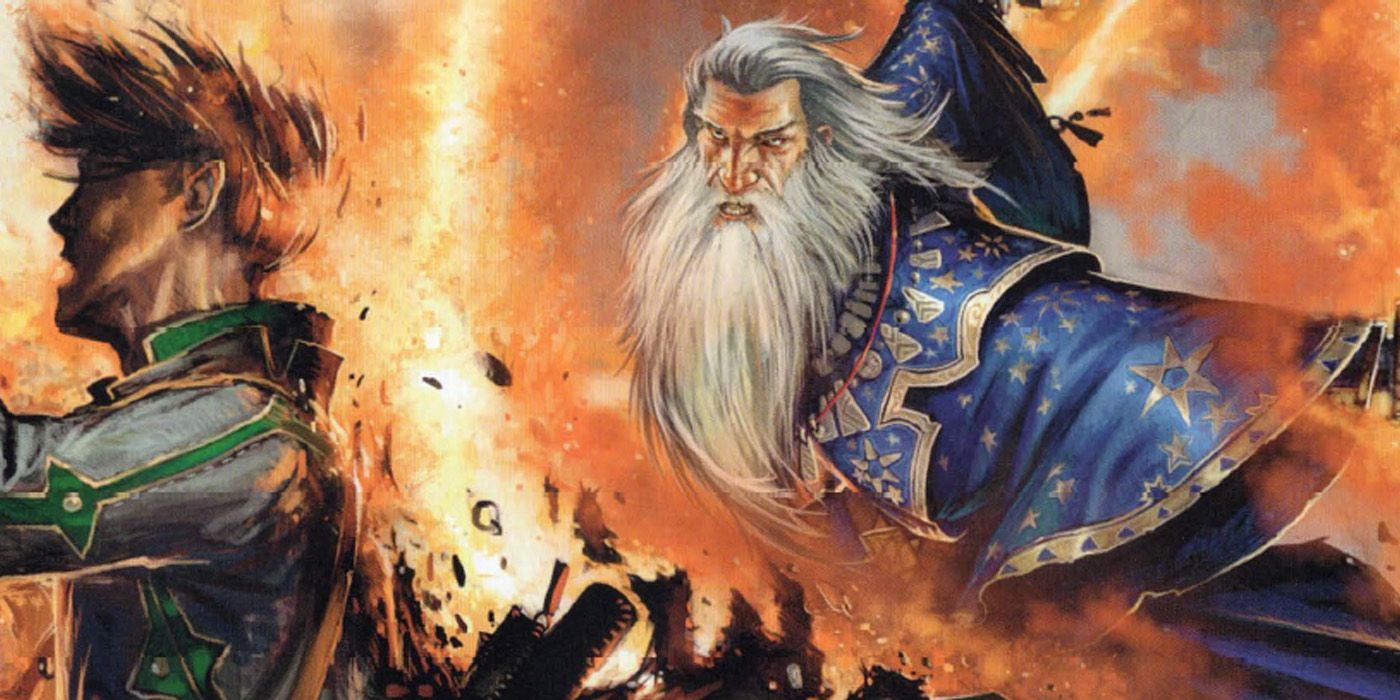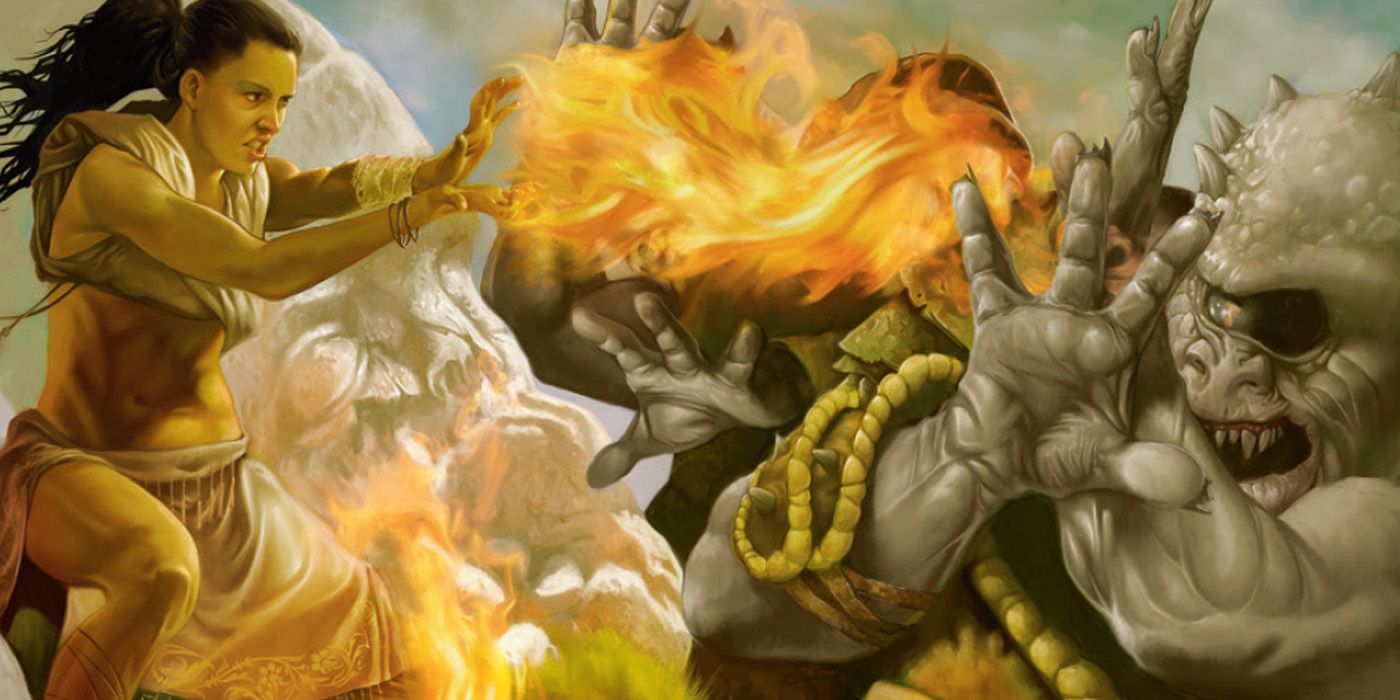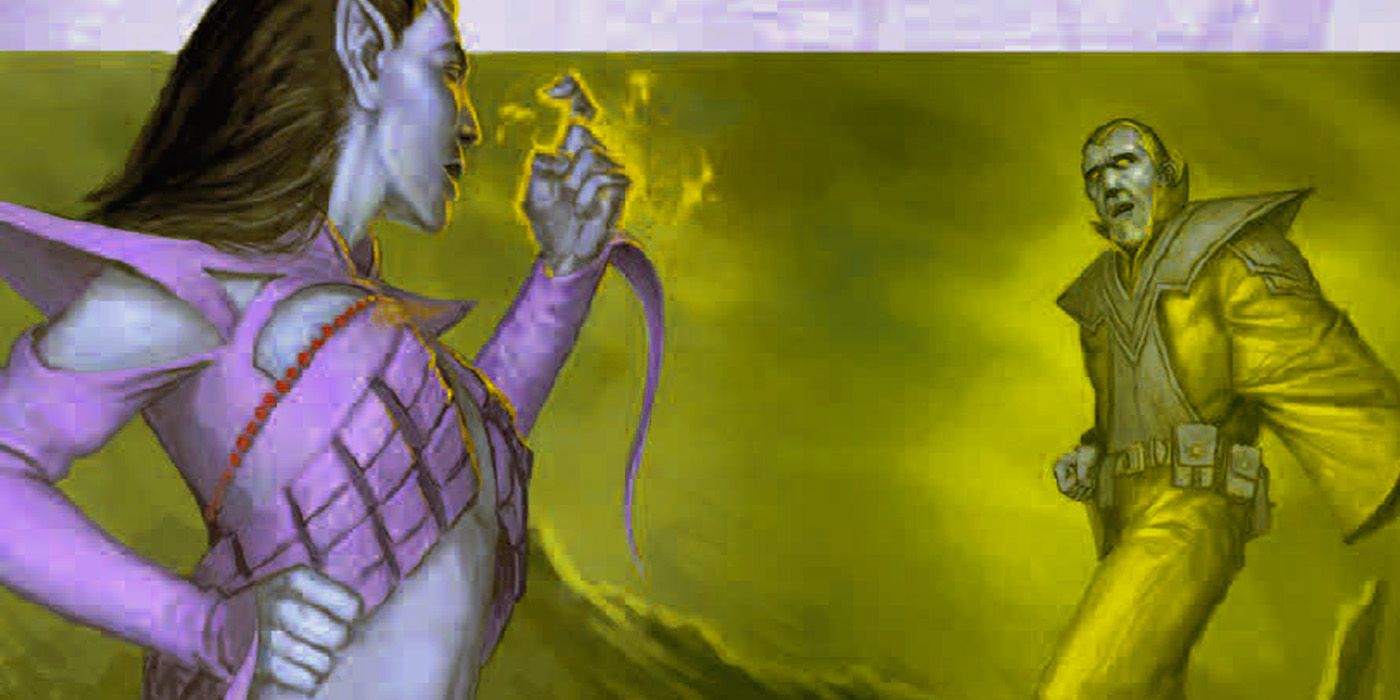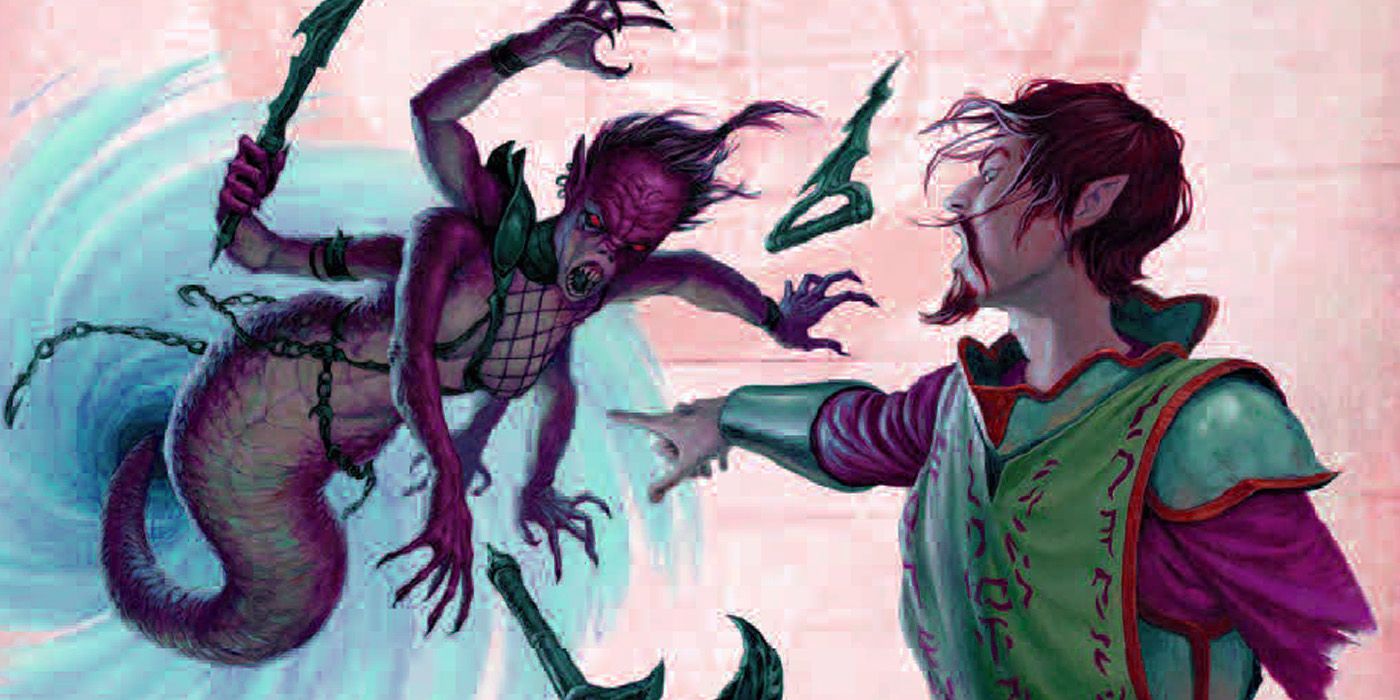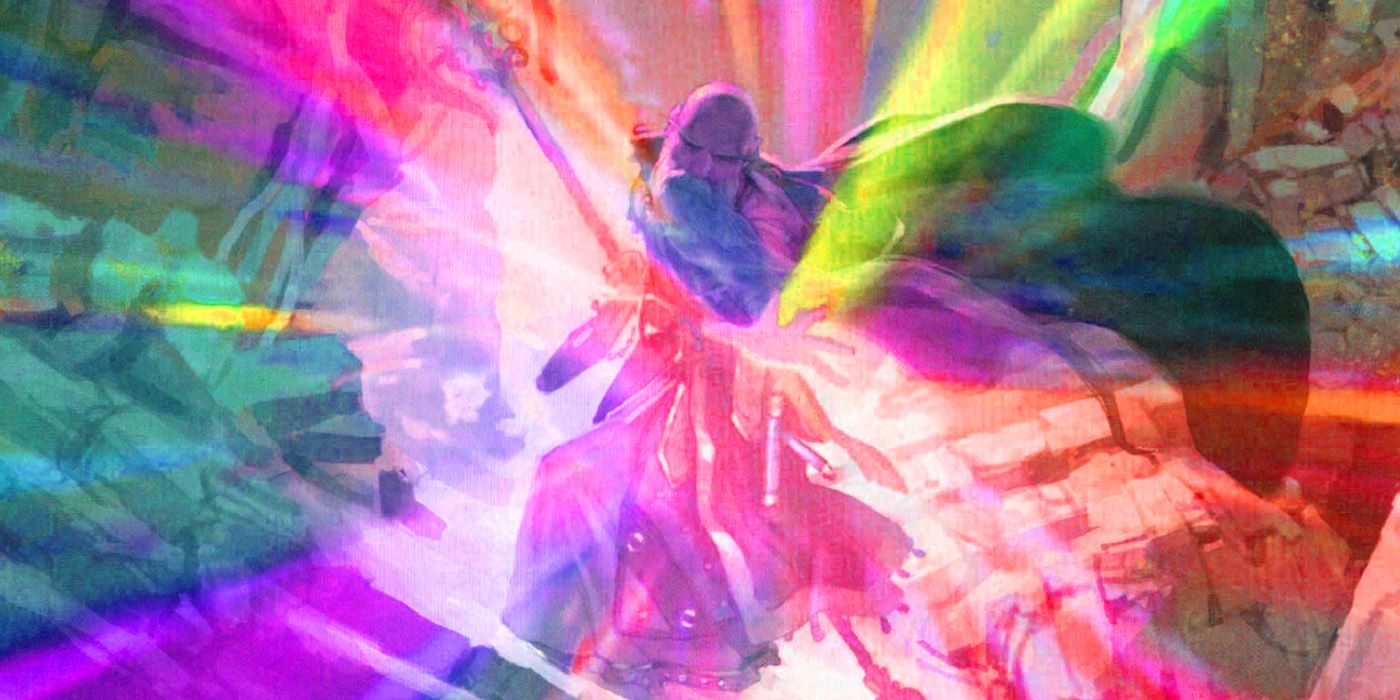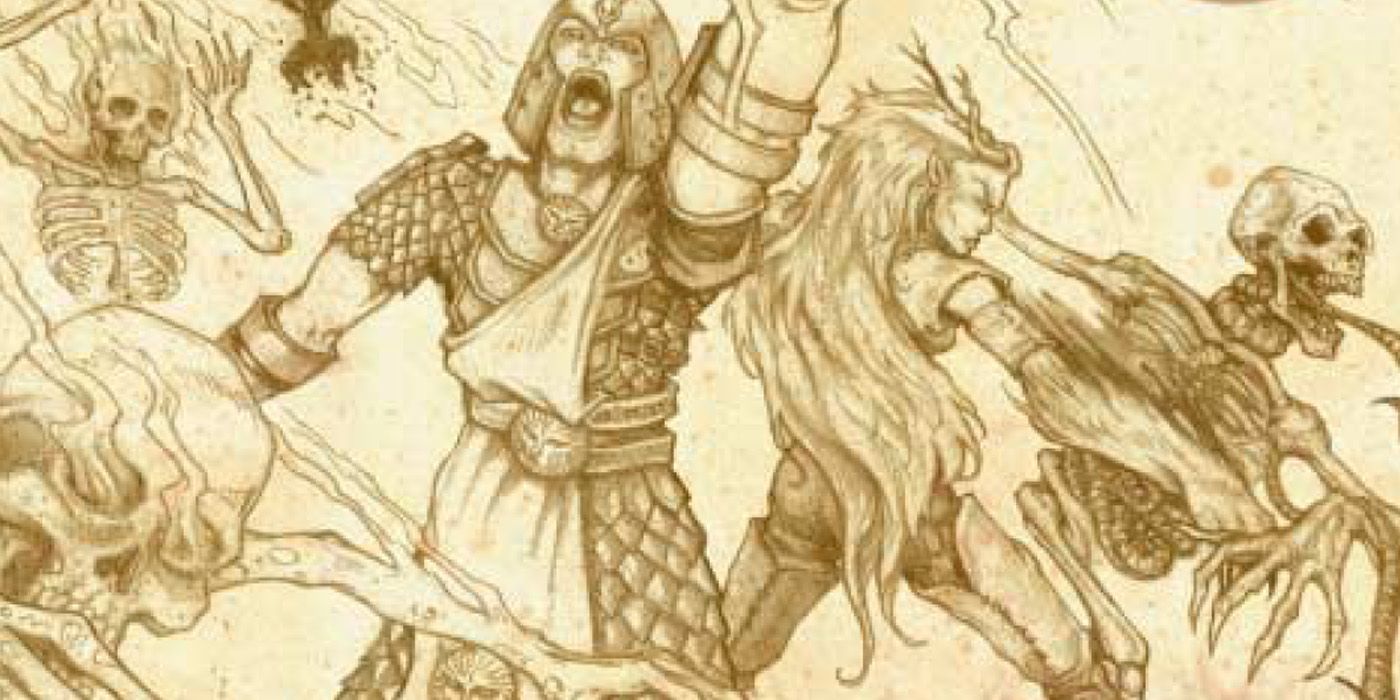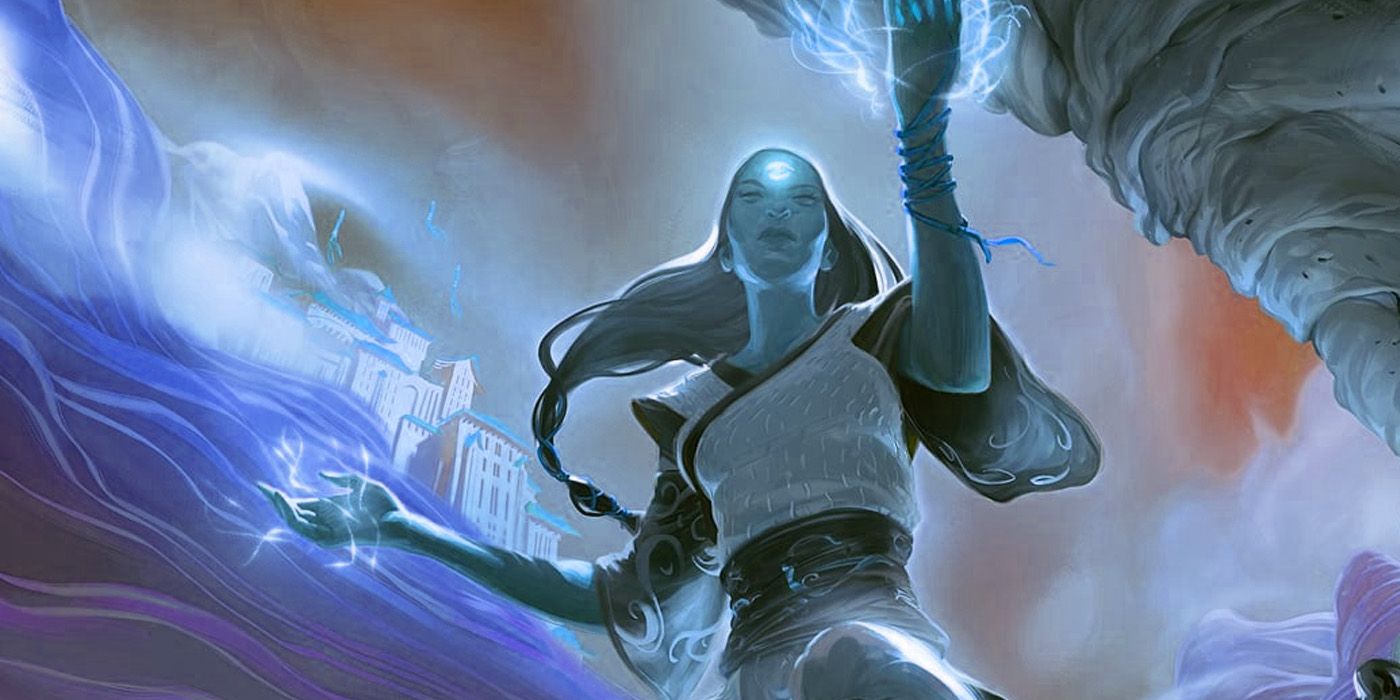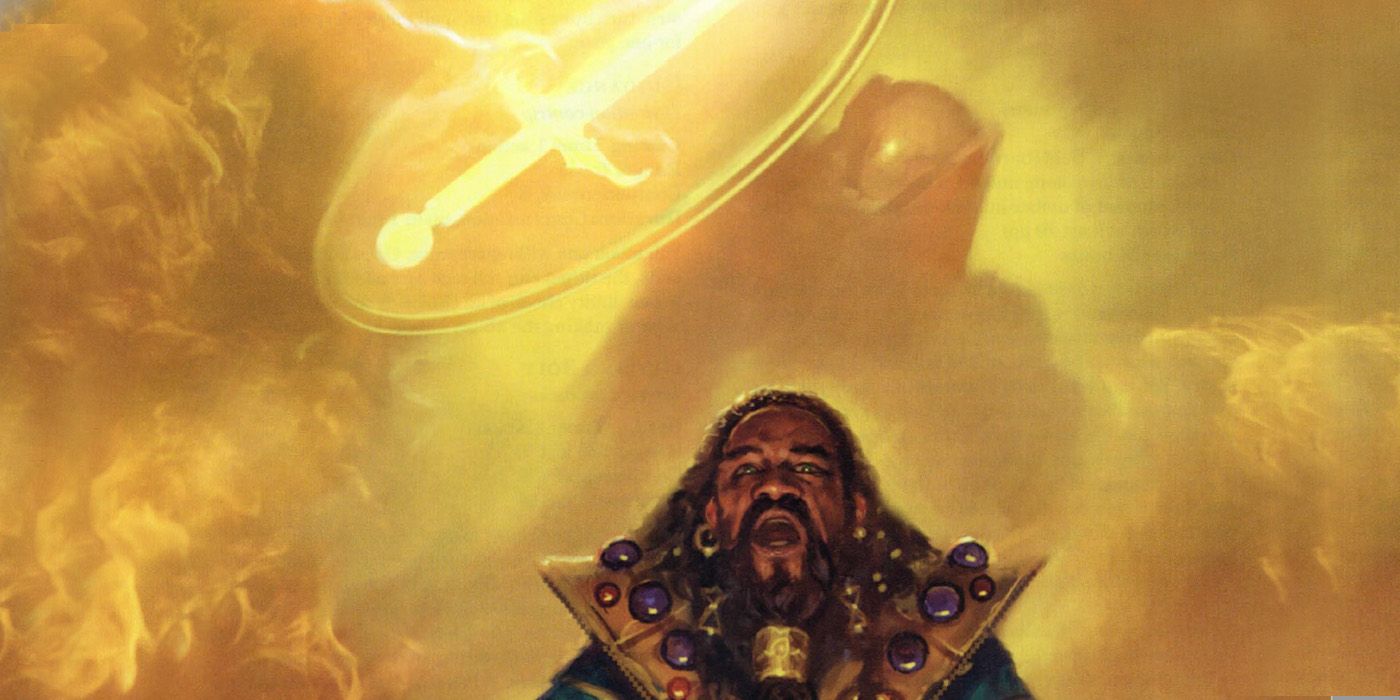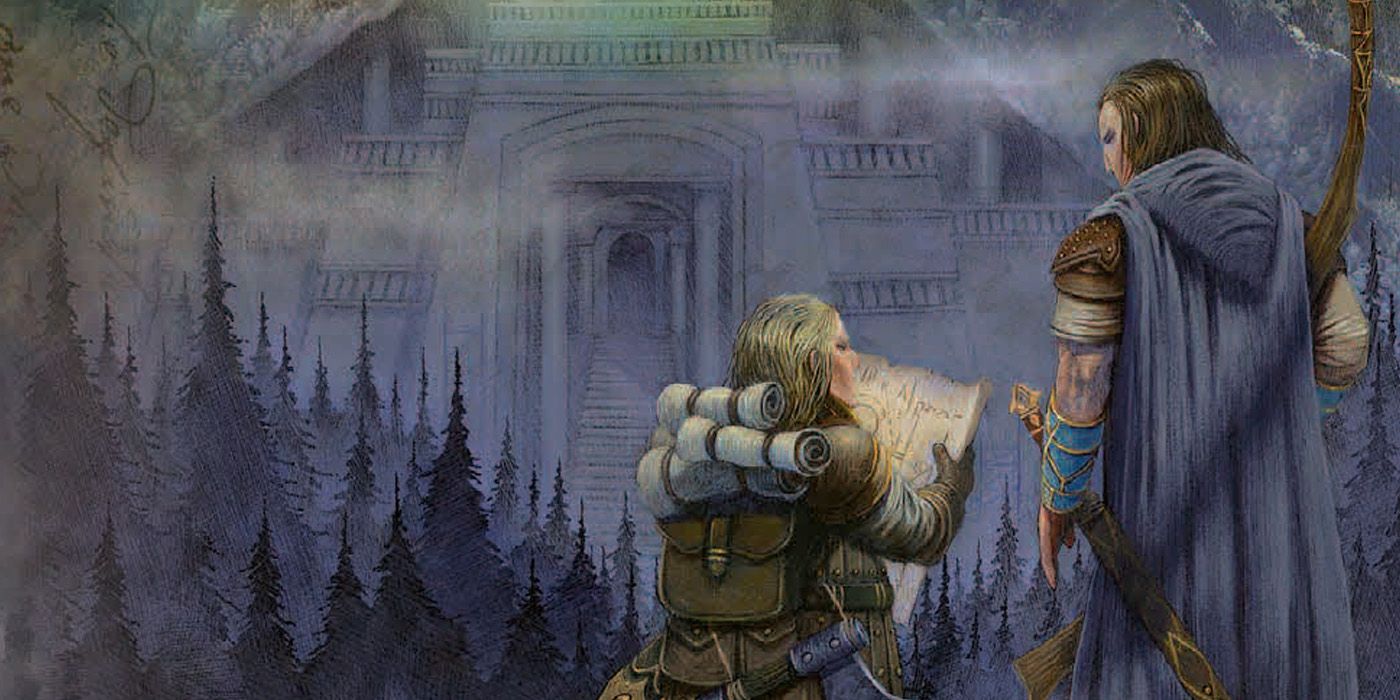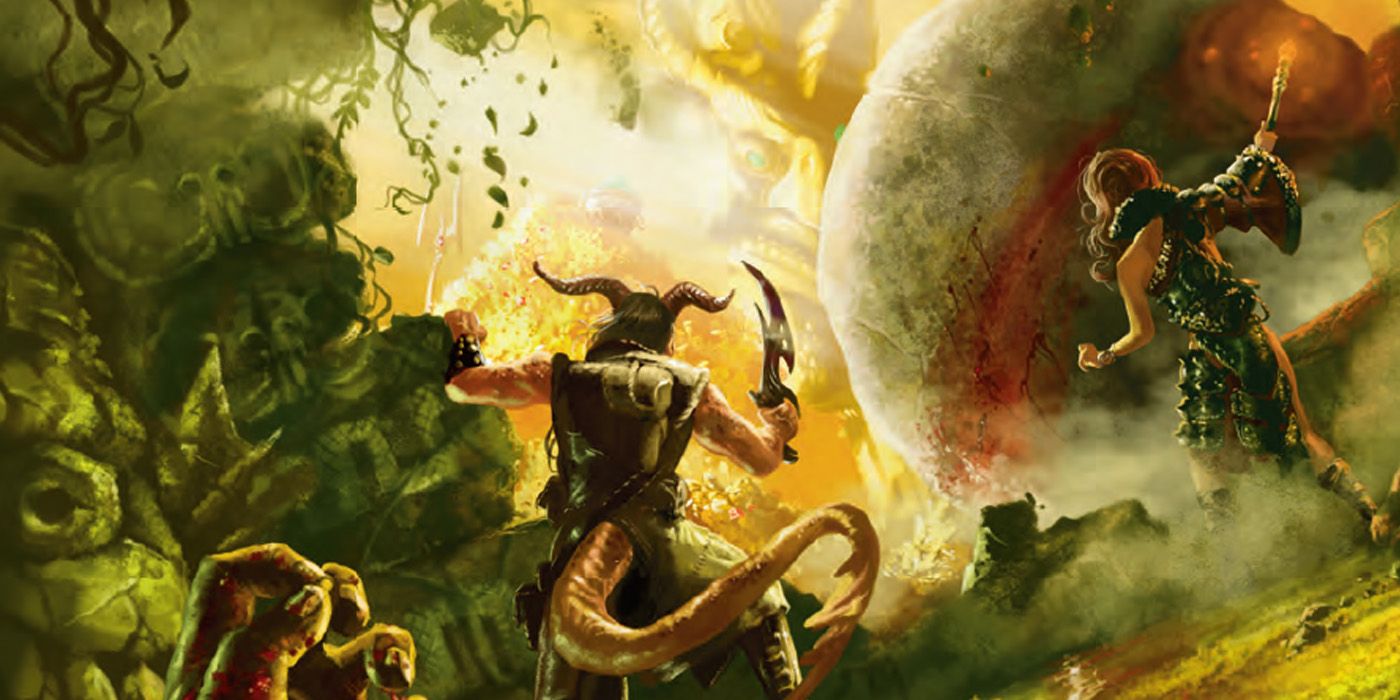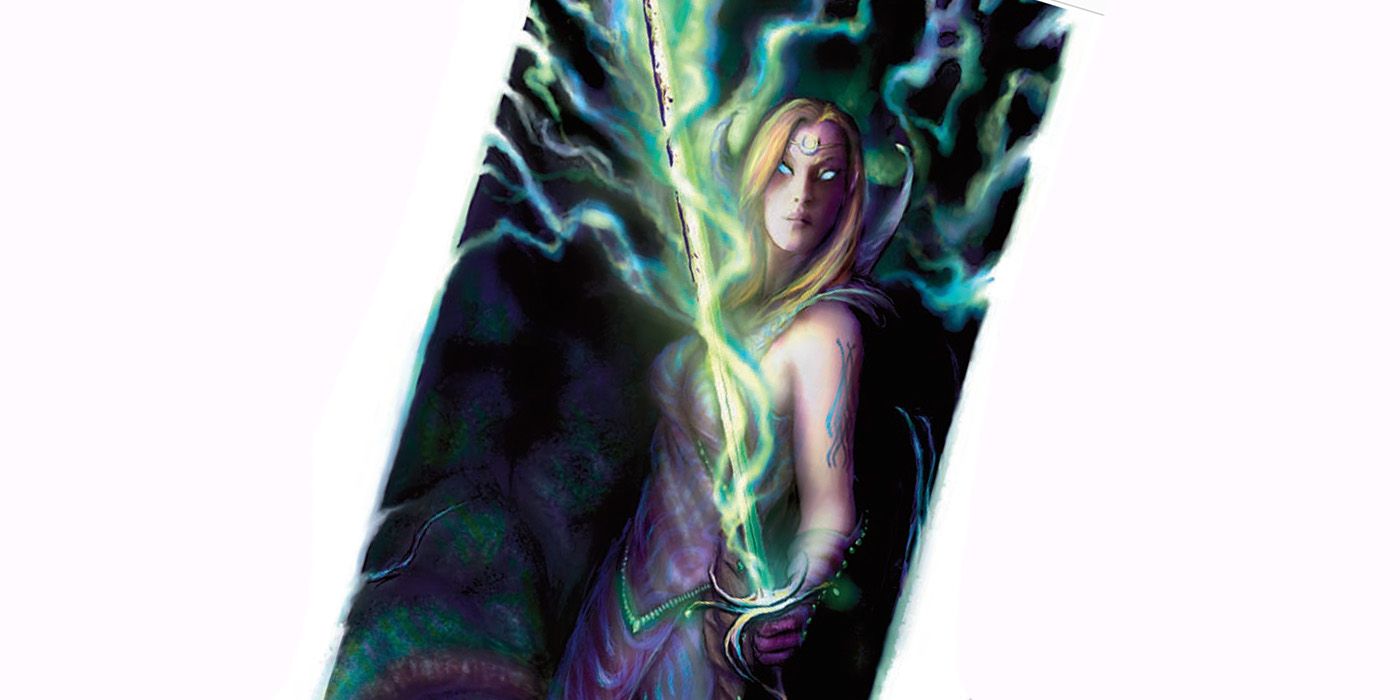Wizards of Dungeons & Dragons use their intellect and scholarly studies to tap into the arcane in the safest, most efficient way possible. Compared to the raw powers of Sorcerers, D&D's Wizards rely on their technical know-how to ensure their Spells work exactly the way they should. Moreover, Wizards thank their Schools for helping them gain mastery over their favored forms of magic.
Players might want to pay attention as to just which Wizard School they put their characters into. If they play their cards right, their Wizard might be on the way to become a powerhouse. However, some players might also want to steer clear of certain Schools if they want to maximize their Wizard's talents.
Updated on 8 October 2021 by Rhenn Taguiam: The Wizard persists as the most iconic spellcaster in the Dungeons & Dragons franchise. Even in D&D 5e, the Wizard continues to tout their signature Spellcasting prowess and array of magical abilities that can eliminate an army of foes when used correctly. However, thanks to Wizard Schools, not all of these characters are exactly alike. Depending on the School, a Wizard can specialize in defensive Abjuration, combative Evocation, or deceptive Illusion, to name a few. However, for players creating a Wizard, just which are the best Wizard Schools and Subclasses for their characters?
10 Transmutation
Under the School of Transmutation, Wizards use creation itself to bend both the mental and the physical. For instance:
- Minor Alchemy allows Wizards to temporarily change the physical characteristics of a nonmagical object.
- The Transmuter's Stone can grant various buffs to wielders.
- Shapechanger gives easy access to Polymorph.
- Master Transmuter can also amplify the Transmuter Stone's abilities.
Despite the limitations of Transmutation on a practical level, it does have its fair share of unique Spells. When utilized properly, these early-level Spells can maximize roleplaying opportunities despite their lack of combat potential. For instance, Shape Water (Cantrip) is easily one of the most creative Spells possible, capable of transforming water into various objects or even terrains. Other potent beginner Spells include Message (Cantrip), Prestidigitation (Cantrip), and Feather Fall (1st-Level).
Unfortunately, the Transmutation School's perks already exist in the form of other Spells and magical effects. Furthermore, Wizards might find a better use of their Spells and training under other useful Subclasses such as Abjuration.
9 Enchantment
Some of the most powerful Wizards can use their magical talents to beguile or entrance other creatures and people to their side, and the School of Enchantment further amplifies the Wizard's means of doing these things.
- Hypnotic Gaze allows them to potentially enthrall a creature next to them.
- Instinctive Charm becomes a handy way of redirecting ranged attacks.
- Split Enchantment now lets them target two creatures when some Spells normally call for a single target.
Due to its nature as a support-oriented Wizard School, Enchantment grants the Enchanter some of the best buffs or debuffs in the game. For starters, Bless (1st-Level) and Heroism (1st-Level) are some of the best early-level buffs in the game. Meanwhile, Spells such as Mind Sliver (Cantrip), Vicious Mockery (Cantrip), Dissonant Whispers (1st-Level), and Crown of Madness (2nd-Level) boast some of the nastiest effects against monsters. Unlike the protective Abjurers, Enchanters certainly make great faces in both roleplay and combat.
Unfortunately, Enchantment isn't exactly as exciting as a School. For one, 14th-Level's Alter Memories requires Charisma – possibly a Wizard's dump stat aside from Strength. Moreover, Hypnotic Gaze only works on one target at a time, making it useless in encounters where enemies outnumber the Wizard's allies. Additionally, Instinctive Charm may force enemies to redirect attacks to the Wizard's allies as well, which might not be a great idea for character development.
8 Conjuration
Wizards with a penchant for summoning familiars find the versatile Ranger – especially Beast Masters – as kindred spirits. The School of Conjuration emphasizes the Wizard's ability to produce creatures and objects out of thin air.
- Most of their Features include Minor Conjuration that lets them summon an inanimate object.
- Benign Teleportation also gives them a quick teleportation ability that they can use to swap places with allies.
- Focused Conjuration also lets them keep Concentration even when taking damage.
Conjuration emphasizes creating the right objects to aid the party in any situation. Surprisingly, Conjurers can tap on Spells such as Sword Burst (Cantrip), Arms of Hadar (1st-Level), Entangle (1st-Level), Fog Cloud (1st-Level), and even Hail of Thorns (1st-Level) as early-level deterrents in combat. Likewise, Misty Step (2nd-Level), Thunder Step (3rd-Level), and Far Step (5th-Level) remain some of the best movement Spells in the game.
Unfortunately, Conjuration doesn't add many improvements to a Wizard's summoning capabilities. Remember, summoned creatures require Concentration to keep them in the material plane. Since anyone can only Concentrate on one kind of Spell, a Wizard can only summon one creature at a time.
7 Illusion
Wizards can use their talents to amaze the mind and senses with Spells that generate illusions limited by the Spellcaster's imagination. As it so happens, the School of Illusion further develops a Wizard's talent for creating illusions.
- Improved Minor Illusion allows Wizards to create both sounds and images in a single Minor Illusion cast.
- Malleable Illusions pave the way for animated illusions.
- Illusory Self gives Wizards an instant clone that can take damage for them.
- Illusory Reality makes illusions corporeal.
Despite the rather small Spell List, Illusion has some of the most potent Spells in the game. Granted, not a lot of these Spells deal damage. However, in the right hands, Spells such as Blur Mirror Image (2nd-Level), Major Image (3rd-Image), and Hallucinatory Terrain (4th-Level) can spell trouble for foes. Likewise, Invisibility (2nd-level), Silence (2nd-Level), and Greater Invisibility (4th-Level) remain some must-have Spells for any party when fighting against stronger foes.
At first glance, Illusion sounds like an awesome School for Wizards. In most cases, it is. However, Illusion demands heavily on the player's imagination to maximize its perks. Unfortunately, players who want to focus on dealing damage might not find as much use in this regard.
6 Necromancy
Instead of relying on potent healing Spells of their Cleric brethren, Necromancers simply let their minions do it for them.
- This School lets Wizards tap into Grim Harvest, which lets the Spellcaster heal whenever their Spell kills.
- Undead Thralls lets Wizard create another animated dead.
- Command Undead helps characters take over the minds of most undead, even of other Wizards.
Some of the most frightening Spells in the game lie in Necromancy, and this isn’t just because of the theme. Early-game Spells such as Spare the Dying (Cantrip), Toll the Dead (Cantrip), Cause Fear (1st-Level), Inflict Wounds (1st-Level), and Ray of Sickness (1st-Level) can devastate enemy groups at the hands of the right player. Likewise, stronger Spells such as Animate Dead (3rd-Level), Summon Undead (3rd-Level), and Raise Dead (5th-Level) can transform a Necromancer into a lord over a collection of undead minions.
As much as Necromancy has awesome perks, it does hold the potential of damaging the party dynamic. Firstly, this School prompts the Wizard to have multiple pets. In turn, they might easily outnumber the party. Secondly, the prospect of "using the dead" might not sit well with tables dominated by good-aligned characters.
5 Divination
Unfortunately, useful Spells such as those from Divination demand a lot of power (and Spell Slots) from Wizards. The School of Divination gives Wizards a handy means of casting Divination Spells much easily.
- Portent allows Wizards to practically change the result of certain rolls.
- Expert Divination makes Divination Spells cost less.
- The Third Eye allows Wizards to assess battlefields much faster.
Albeit requiring heavy roleplay, a Diviner can tap into Divination to provide a lot of benefits to the party. Early-level Spells such as Guidance (Cantrip), True Strike (Cantrip), and Hunter’s Mark (1st-Level) can provide much-needed damage boosts to allies. Likewise, detection magic such as Detect Evil and Good (1st-Level), Detect Magic (1st-Level), and Detect Thoughts (2nd-Level) can turn the tide of roleplaying for players looking for outlets for their creative juices.
Divination becomes a powerful School due to its ability to aid the party inside and outside of combat. A Wizard that can arm the party with their foresight can greatly reduce the chances of unnecessary deaths. In turn, this School maximizes the Wizard's host of utility Spells.
4 Abjuration
The School of Abjuration focuses on negating and denying negative effects – all of which can help parties against the harshest of foes and the deadliest of boss NPCs.
- Arcane Ward and Projected Ward can absorb damage.
- Improved Abjuration further amplifies a Wizard's host of protective spells.
- Spell Resistance helps Wizards not only avoid debilitating magic effects but also reduces the damage taken.
As a result, the Abjuration is a great School of Wizards who want a defensive role in combat. After all, Abjuration Spells already add defenses to parties. However, Abjuration further enhances their potency and potential for protection.
Perhaps the hallmark of defense, Abjuration is the go-to Wizard School for everything about protecting and healing one’s allies. Outside must-have restoration Spells, early-level Abjuration Spells worth the Spell Slots include Mage Armor (1st-Level), Shield (1st-Level), Aid (2nd-Level), and even Pass Without Trace (2nd-Level). Meanwhile, more devastating Spells from the Wizard School include Counterspell (3rd-Level), Dispel Magic (3rd-Level), and even Protection From Energy (3rd-Level).
3 Order Of The Scribes
Some Wizards might want to focus less on training their Spells and more on collecting them. In that case, the Order of the Scribes will be the right fit for them. Scribes obtain a Wizardly Quill and Awakened Spellbook that makes copying and learning Spells much easier.
- Manifest Mind allows a Scribe to conjure a useful familiar.
- Master Scrivener further enhances their ability to craft Spell Scrolls.
- One With The World enables the Scribe to further improve upon their intellect and use it to protect themselves from Spells.
The Order is a Subclass that can be treated as a unique Class on its own. Being a Scribe celebrates the best aspects of Wizards, most of which involve collecting Spells. This Subclass works for Wizards who want to tout themselves more as scholars instead of being "that one Fireballing guy."
Courtesy of their Awakened Spellbook, a Scribe can easily compensate for any combat situation by simply changing damage types. In a type-heavy campaign such as those against colored dragons, a Scribe with this ability can become an invaluable asset. Likewise, Manifest Mind gives Scribes access to a Spellcasting outlet, greatly increasing their range of efficiency. In large-scale combat, a Scribe can deal devastating damage without risking exposing their position.
2 War Magic
Wizards training under War Magic can perfectly blend the offensive capabilities of Evocation and the defensive traits of Abjuration. As a result, War Magicians have better defensive capabilities that make them akin to Clerics wielding powerful weapons.
- Arcane Deflection, Durable Magic, and Deflecting Shroud easily give them various defensive boosts.
- Tactical Wit lets them act faster with higher Initiative.
- Power Surge grants them a power boost to offensive spells as early as 6th-Level.
With War Magic and its expanded Spellcasting options, a Wizard can comfortably cast their preferred Spells without worrying about usual mechanics. Durable Magic allows them to bypass Concentration penalties through a handy bonus, letting them cast powerful Spells that would ordinarily tax a Wizard. Likewise, Tactical Wit and Arcane Deflection expand the Wizard’s combat potential with an Initiative buff and a defensive buff. With the right combat strategy, a War Wizard can get quite aggressive despite their inherently weak bodies.
Despite War Magic's similarities with the School of Abjuration, War Magic seeks to become purely defensive. While Abjuration tries to mitigate damage taken from attacks, War Magic tries to prevent attacks from hitting the Wizard entirely, making this an ideal defensive School or subclass.
1 Bladesinger
If the Fighter has the Eldritch Knight and the Warlock has the Hexblade, the Wizard has the Bladesinger. These Wizards train in using the potency of their Spells with the talents of fighting. In turn, their skills amplify their potential in melee combat.
- Training In War Song gives them Proficiency in Light Armor, which grants a decent AC boost.
- Bladesong and Extra Attack allow Wizards to combine both Spells and melee attacks in battle.
- Their Songs of Defense and Victory can make attacking and defending much easier for them.
Wizards who want to have a more proactive role on the battlefield can enjoy playing the Bladesinger. Furthermore, their melee capabilities – especially with an ancient artifact weapon – can grant them a lot of opportunities to take on the role of an offensive DPS without being the archetypal glass cannon Wizard.
Thanks to the wonders of Bladesinging, this Subclass easily transforms the Wizard into a melee combatant. Its Extra Attack alone gives Wizards the opportunity to cast a Cantrip or another weapon attack, depending on their preference. Likewise, switching between Songs of Defense or Victory can help Wizards access more powerful defensive or damaging numbers at the cost of their Spell Slots. When built properly, a Bladesinger can be as potent as a Rogue when it comes to damage numbers.

